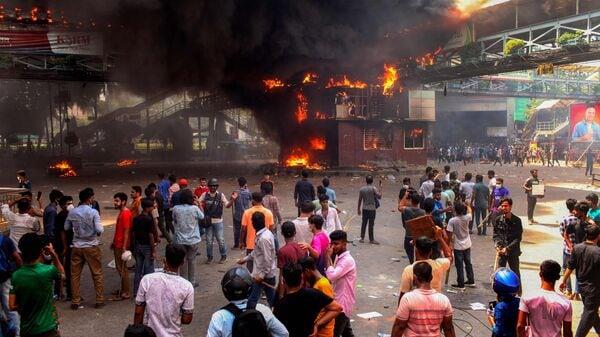
Bangladesh's Supreme Court Orders Major Cutbacks In Contentious Jobs Quota As Protest Turn Deadly: Explained In 5 Points
Referring to an earlier ruling that reintroduced the quotas, attorney-general AM Amin Uddin told AFP, "The Supreme Court has said the high court verdict was illegal." He added that 5 percent of civil service jobs would remain reserve for children of independence war veterans and two percent for other categories.
Here's all you need to know about the Bangladesh job reservation system and what is happening in Bangladesh:
1. Death toll: A massive student-led protests gripped Bangladesh earlier this week. At least 114 people have been killed in the South Asian country, local media reported.
Also Read | Bangladesh crisis: 115 killed as thousands take to streets against quota system2. What triggered the protest: The protest by students stems from persistently high youth unemployment, which stands at about 40%, according to the latest census. The protesters demand to reform the country's quota system for civil service jobs.
The quota under scrutiny reserves positions for specific groups, including descendants of those who participated in the 1971 War of Independence against Pakistan. It reserved 30 percent of government jobs for the families of those who fought the 1971 war.
3. What protesters and Bangladesh PM say: Protesters want the quota system to be replaced with a merit-based system. They argue the quota system is discriminatory and benefits supporters of Prime Minister Sheikh Hasina.
Meanwhile, Bangladesh PM Hasina has defended the quota system, saying that veterans deserve the highest respect for their contributions in the war against Pakistan, regardless of their political affiliation.
4. What has happened in court so far: In 2018, the government halted the job quotas following mass student protests. But in June, Bangladesh's High Court nullified that decision and reinstated the quotas after relatives of 1971 veterans filed petitions.
On Sunday, July 21, the court's Appellate Division dismissed a lower court order that had reinstated the quotas, directing that 93 per cent of government jobs will be open to candidates on merit, without quotas, reports said.
Also Read | Explaining Razakar's 1971 role and its revival in Bangladesh protestsThe Supreme Court ordered on Sunday that the veterans' quota be cut to 5 percent, with 93 percent of jobs to be allocated on merit. The remaining 2 percent will be set aside for members of ethnic minorities and transgender and disabled people.
5. Deadly unrest in Bangladesh: The internet was shut down nationwide since Thursday, restricting mobile data services and affecting ATMs among others. The government declared public holidays on Sunday and Monday, effectively closing government and private offices.
Also Read | Bangladesh quota protests: From curfew to internet banA government curfew went into effect at midnight. The army was deployed with a“shoot-on-sight” order across the country on Saturday. The Associated Press reported on Friday that security forces fired rubber bullets and tear gas at a crowd of more than 1,000 protesters who had gathered outside the head office of state-run Bangladesh Television, which was attacked and set on fire by protesters the previous day.
Sporadic clashes in some parts of Dhaka, the capital, were reported on Saturday but it was not immediately clear whether there were any fatalities. Legal Disclaimer:
MENAFN provides the information “as is” without warranty of any kind. We do not accept any responsibility or liability for the accuracy, content, images, videos, licenses, completeness, legality, or reliability of the information contained in this article. If you have any complaints or copyright issues related to this article, kindly contact the provider above.
Most popular stories
Market Research

- Manuka Honey Market Report 2024, Industry Growth, Size, Share, Top Compan...
- Modular Kitchen Market 2024, Industry Growth, Share, Size, Key Players An...
- Acrylamide Production Cost Analysis Report: A Comprehensive Assessment Of...
- Fish Sauce Market 2024, Industry Trends, Growth, Demand And Analysis Repo...
- Australia Foreign Exchange Market Size, Growth, Industry Demand And Forec...
- Cold Pressed Oil Market Trends 2024, Leading Companies Share, Size And Fo...
- Pasta Sauce Market 2024, Industry Growth, Share, Size, Key Players Analys...





















Comments
No comment